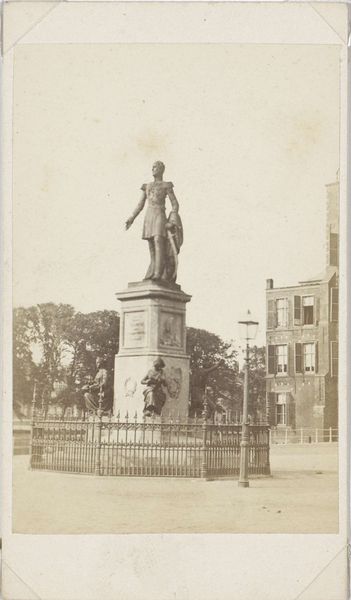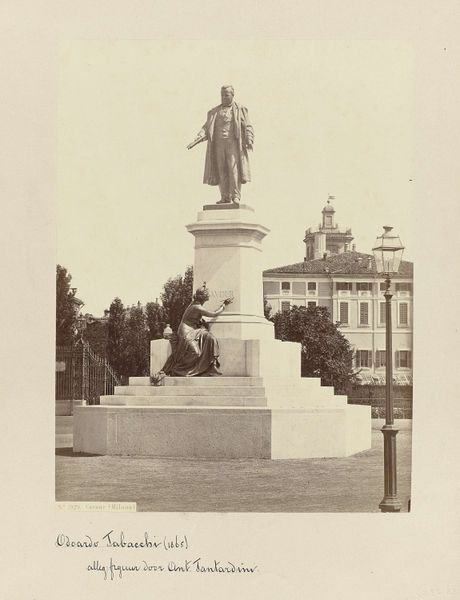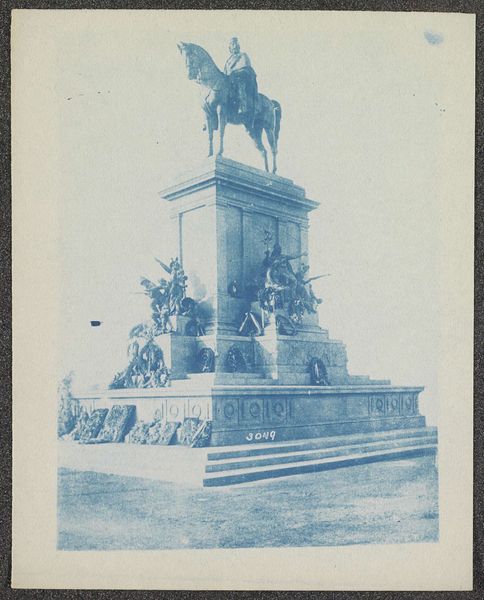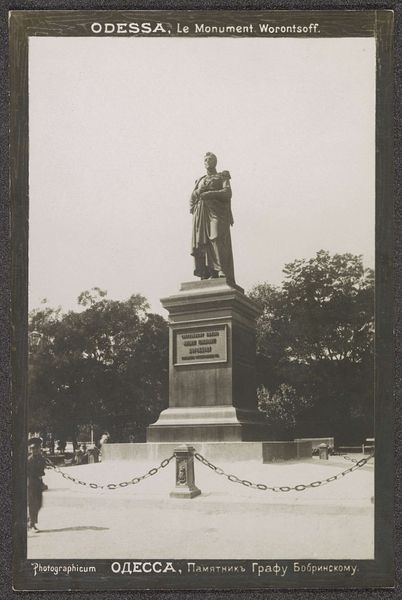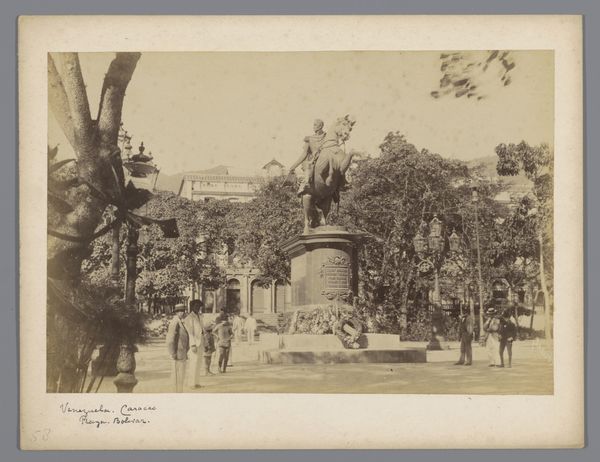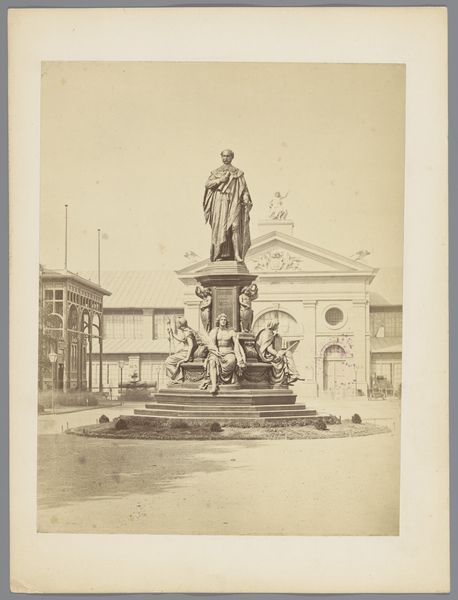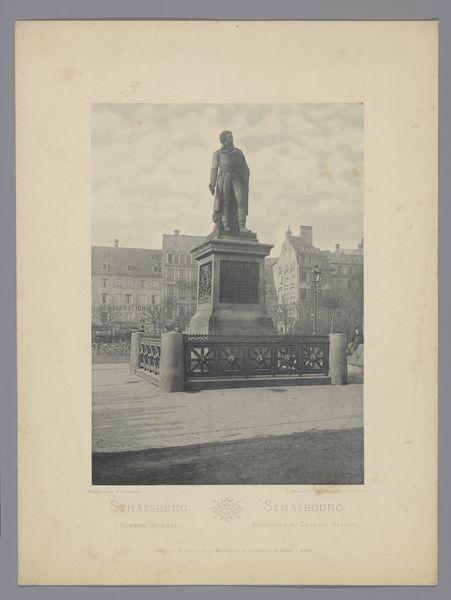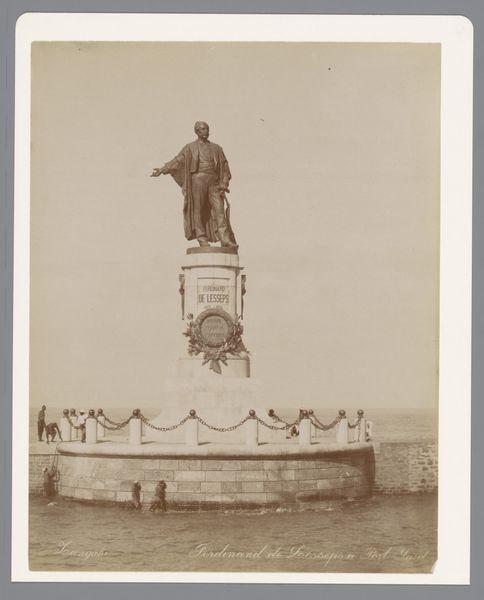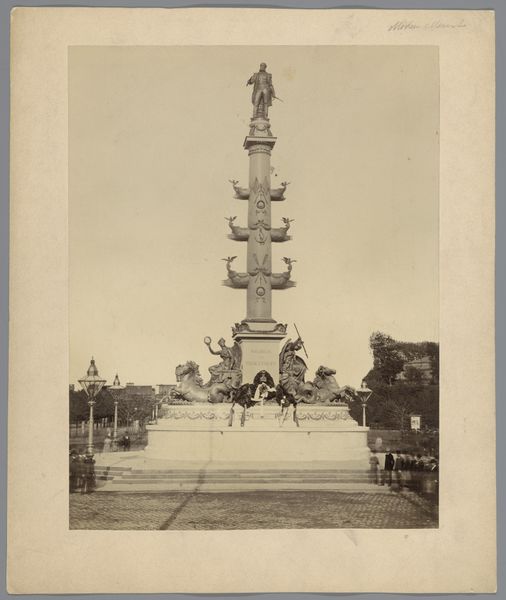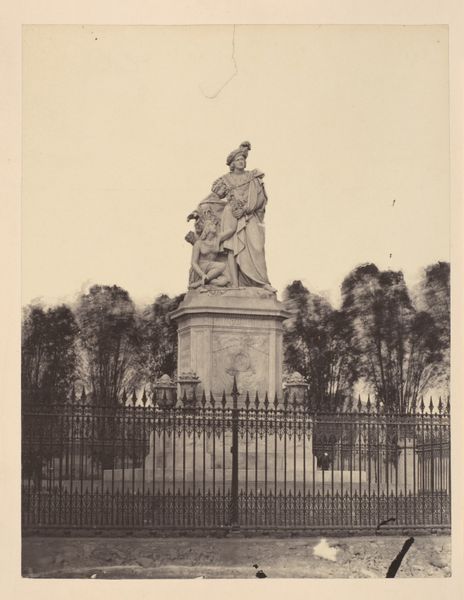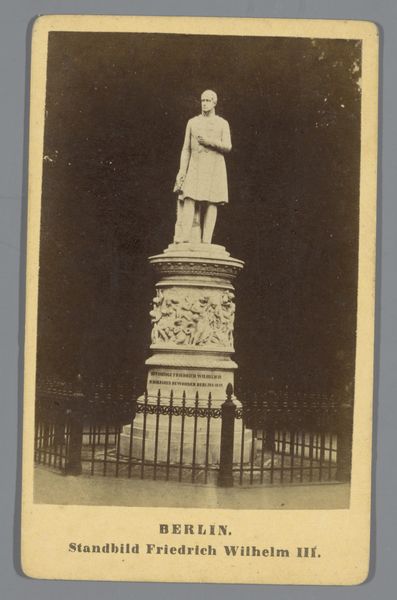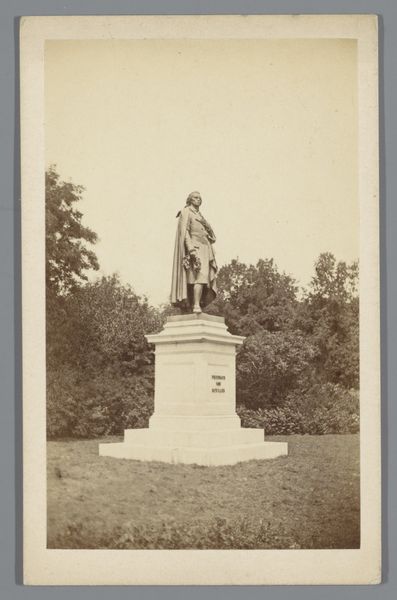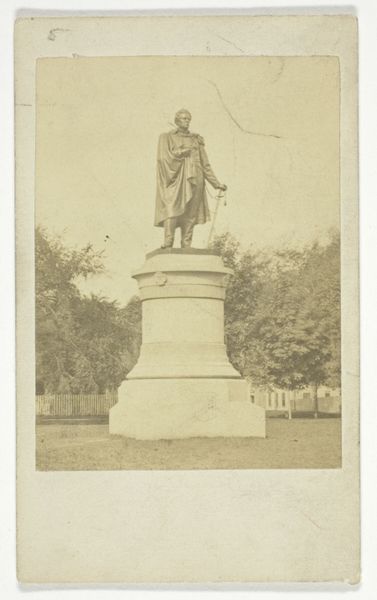
bronze, photography, sculpture
#
portrait
#
statue
#
landscape
#
bronze
#
photography
#
sculpture
#
monochrome
Dimensions: height 279 mm, width 222 mm
Copyright: Rijks Museum: Open Domain
Editor: This is an anonymous photograph of the "Monument voor Camillo Benso Cavour te Milaan," taken sometime between 1865 and 1900. It appears to be a bronze sculpture in a public square, rendered in monochrome. It strikes me as a very formal and imposing monument. What can you tell me about its historical context? Curator: It's interesting to consider public monuments within the social and political landscape of their time. Cavour was a pivotal figure in the Italian unification, so this monument would have been commissioned to cement his legacy and project a unified national identity. Consider who commissioned it, the messages they hoped to convey, and the audience they wanted to reach. Editor: That's a good point. Who *did* typically commission these kinds of monuments in the late 19th century? Was it the state, or private citizens? Curator: It's usually a combination. Often, you'd have a public subscription championed by prominent citizens who would then petition the local or national government for approval and a prominent site. The location itself tells a story - was this placed near a site of political importance or where the public might easily engage with it? And look at the figure at the base; is that a representation of 'Italy' itself? These symbols carry immense political weight. Editor: It makes you think about the role of art in shaping public opinion and collective memory, especially during nation-building. Now I’m thinking about other monuments and who *they* represent. Curator: Exactly! And who *they* exclude. The monument's continued presence - or its removal - is itself a political statement. Public art becomes a battleground for how a nation understands its history. What do you take away from how it impacts you now? Editor: I see that a photo and not reality adds another layer of artifice. Thank you; this has really given me a lot to consider.
Comments
No comments
Be the first to comment and join the conversation on the ultimate creative platform.
